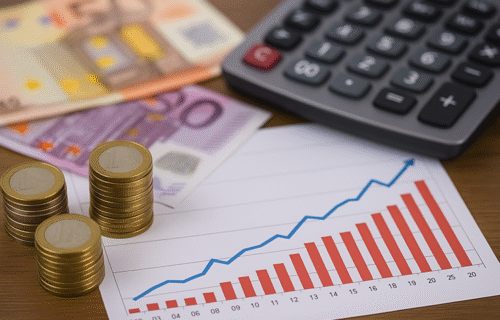Slovakia’s public finances weakened last year, with the government’s deficit rising to 5.5% of GDP and total debt approaching 60% of national output, according to new data from the Statistical Office. The shortfall, amounting to around €7.2 billion, was higher than earlier estimates published in the spring and reflects slower tax collection and continued pressure from public spending.
The latest figures show that Slovakia’s deficit grew by roughly €600 million compared with 2023, when it stood at 5.3% of GDP. The central government accounted for most of the shortfall, recording a loss of €7.4 billion, while local administrations also ended the year in deficit. Social insurance funds, however, generated a small surplus, helping to offset part of the imbalance.
Officials said the deterioration was partly due to weaker revenue from corporate and personal income taxes, as well as a decline in the so-called solidarity levy, which was introduced to support budget stability. At the same time, higher social contributions and payments linked to energy-price compensation schemes added modestly to income.
Public debt rose by almost €9 billion to reach €77.7 billion, representing about 59.7% of GDP. That marks an increase from 55.8% in 2023 and puts Slovakia close to the European Union’s fiscal ceiling. The rise was attributed to additional borrowing and new liabilities connected to renewable-energy support measures.
Analysts say the results underline the need for tighter budget discipline as Slovakia continues to face pressure from slowing economic growth and high public-sector spending. The figures are part of the country’s regular update submitted to Eurostat, which will release comparable data for all EU members later this week.
While the government has pledged to gradually reduce the deficit in the coming years, the pace of consolidation remains uncertain amid political debates over taxation, social benefits, and energy subsidies. Economists warn that unless stronger reforms are introduced, Slovakia’s debt could surpass 60% of GDP in 2025, placing additional strain on public finances and testing investor confidence.
Source: SOSR
